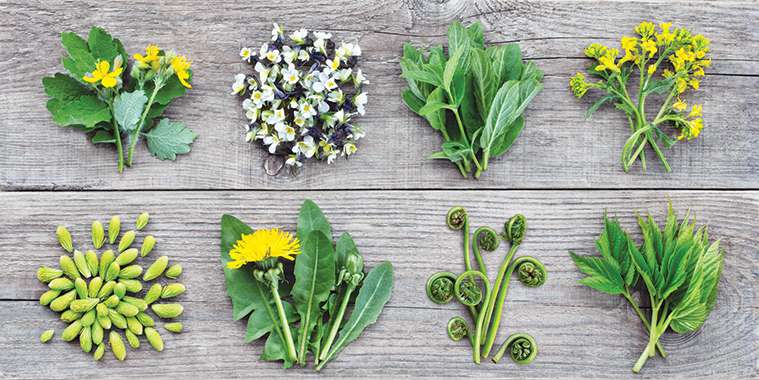Whether you prefer a soothing cup of chamomile or a steaming mug of fragrant peppermint, there’s something uniquely satisfying about enjoying a cup of tea. But did you know you can step out into your garden and snip everything you need for the perfect steeped beverage? We asked author Jodi Helmer to share some expert herbal tea growing tips from her new book, Growing Your Own Tea Garden.
“The great thing about growing a tea garden is it can be tailored to any gardener’s experience and tastes,” Helmer says. You can put a few low-maintenance plants like mint, lemon verbena and holy basil (tulsi) in containers to then harvest and steep fresh leaves for a delicious cup of tea, or you can grow camellia sinensis, the tea plant, and take the time to process them into black, white or green tea.
“I love mint. Mint varieties are among the easiest to grow — and the most delicious to brew. It pairs really well with other plants that can be used to make teas, including raspberries, lavender and lemon-y plants like lemon verbena and lemongrass,” Helmer said. “However, mint can be invasive, so it’s ideal to put in containers.”
If you’re short on space, you can plant many varieties, such as coriander, holy basil, parsley, marjoram and tufted violets in pots, instead.
“Try them for a season, see how you like growing them (and brewing them for tea), and change it up next year,” she said. “Container gardening with annuals gives you a lot of flexibility to try new flowers and tea blends.”
Other easy-to-grow varieties include chamomile and Echinacea — perennials that will produce more and more flowers to make tea each season — and calendula, a great annual flower for a tea garden. For those hands-off gardeners, there’s no need to grow anything at all, Helmer adds.
“Plants we commonly think of as weeds, such as dandelion and red clover, are amazing in tea,” she said. “All you have to do is forage for them — but be sure to harvest from places that have not been sprayed with chemicals.”
Other than growing for brewing, planting a tea garden provides other benefits. For example, many tea plants also attract pollinators and beneficial insects, Helmer said.
“Also, many of the plants I recommend for tea gardens, like raspberries, blueberries and persimmons serve a dual purpose — you can use the leaves in tea and eat the fruits,” she notes.
“Herbs are often medicinal, too. The book includes garden plans for plants and tea blends that help boost immunity, ease tummy troubles, alleviate headaches and offer calming effects.”
Not enough sun in your garden? Pop in shade-tolerant plants like lemon verbena, stevia and bee balm. If your space gets lots of sunlight, choose varieties such as cardamom, apple mint or blackberry.
It’s important to learn how to tell when your plants are ready to harvest and how to use them to make the perfect cup (or glass) of tea, Helmer said. Cut herbs first thing in the morning for the best flavour, for example.
“With herbs, the young leaves are the most flavourful; fruits need to ripen and flowers need to bloom,” she explains. “You have to know which part of the plant to use in tea and know when they are ready to brew. Most of the flowers, herbs and fruits I recommend can be used fresh or dried; the flavours of dried ingredients are stronger, so you’ll use less in a cup of tea than if you’re brewing with fresh ingredients.”
Your oven makes a great tea leaf dryer! Spreading herbs out on a cookie sheet, letting them sit for about two hours. Time and temperatures depend on the variety: To dry properly, black tea leaves need 15-20 minutes at 245º F, for example, while green tea leaves require 10 minutes at 230º F.
Growing a tea garden, even a small one, is a great way to use plants in new ways, and it’s always extra rewarding to serve and enjoy the fruits (and herbs and flowers) of your own labour.
Jodi Helmer’s Cilantro Mint Tea
(Makes 1-2 servings)
1 tablespoon (15ml) fresh cilantro (coriander) leaves, packed
1 tablespoon (15ml) fresh peppermint leaves
2 teaspoons (10ml) orange peel (no white pith), coarsely chopped
1 teaspoon (5ml) fresh ginger, finely chopped
2 cups (480ml) water
Honey to taste
Place the herbs, orange peel, and ginger in a cup. Gently crush with the back of a small spoon to release the essential oils. Bring the water to a boil. Pour hot water over the herb mixture and let it steep for five to seven minutes. Strain the leaves and stir in honey to taste.
— Realtor.ca



